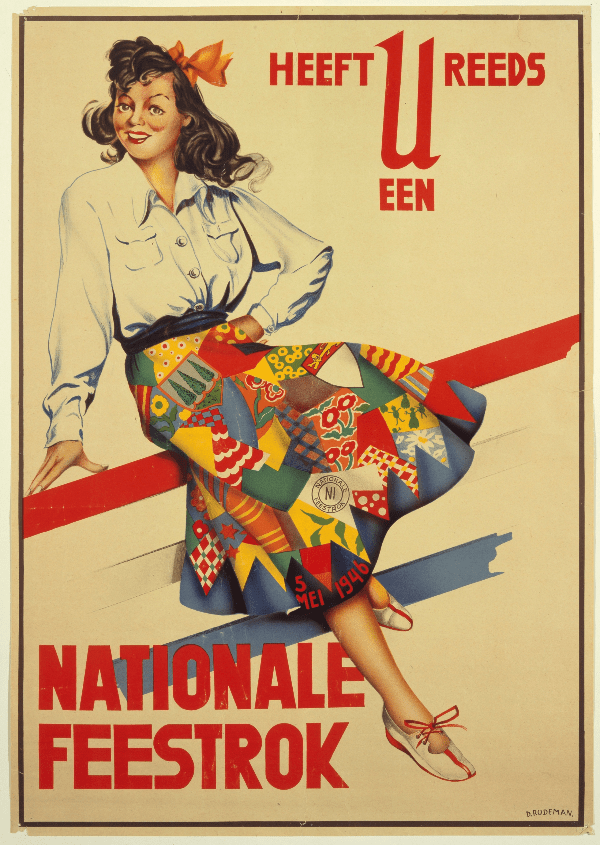
The Dutch National Liberation Skirt
The National Liberation Skirt, Nationale Bevrijdingsrok or Feestrok, was the brainchild of Dutch resistance fighter and feminist, Mies Boissevain-van Lennep. Mies and her family had been involved in efforts to house and protect Jewish refugees from Nazi Germany. For four years they hid fugitives and gave them false identities. In August 1943, Mies and her three sons were arrested by the Gestapo. her two eldest sons were executed two months later.
Mies and her remaining son, Frans, were imprisoned in the Herzogenbusch concentration camp. Here, Mies worked as a nurse in the hospital and managed to escape the gas chambers on many occasions. During her imprisonment a patchwork scarf was smuggled into her. It was created from textiles with personal significance to her, including a pieces from her children’s clothing. This was a treasured item laced with special memories and a symbol of hope and love.
After the liberation of the Netherlands in May 1945, Mies became a member of a women’s committee. They decided to create a new garment that represented ‘unity and diversity’, ‘new from old’, ‘building from the broken’ and ‘one garment creates unity’ and rebuilding the Netherlands after the devastation of the war. The feestok was born.

The National Liberation Skirt
The National Liberation Skirt design took direct inspiration from that precious piece of cloth smuggled to Mies during her imprisonment. The skirt was constructed by sewing colourful fragments of material onto an old skirt, making the old skirt ‘vanish’ and creating a colourful new ‘garment’. At the front of the skirt there had to be a triangle with ‘5 mei 1945’ embroidered (5th May 1945 was Liberation Day in Holland).
Each skirt that was created was registered and the name, address and date of birth of the maker noted, both in a national archive and on individual cards. The skirt was given a special number, which was also often stitched onto the skirt itself. Women would also stitch on other important dates relating to the maker’s family or national celebrations. 4,000 skirts were registered, but it is likely that many more were made and worn.

The feestrok has been described as “a female mode of political expression … [which] explicitly linked gender to the reconstruction of a ravaged country and the general striving for ‘breakthrough’ and social renewal.” (Withuis, Jolande (1994). “Patchwork politics in the Netherlands, 1946-50: women, gender and the world war II trauma”. Women’s History Review)
We will be sharing more blogs about World War II in the Netherlands in honour of the 75th Anniversary of Operation Manna this month, visit our blog space to find out more.
Are you on Social Media? We are on Facebook, Twitter and Instagram, follow us to find out the latest International Bomber Command Centre news first!